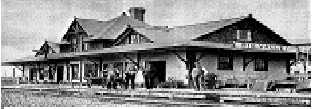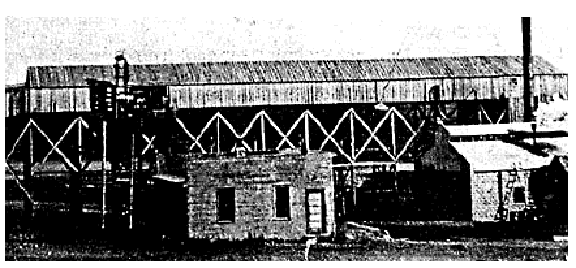

Home | Architecture | Communication | Education | Fashion | Government | Industry | Railroads and Mines | Recreation | Religion | Technology | Transportation | Our Roots Resources

What job would you take in the 1920’s? There were many choices in Big Valley back then. There where stores to run, hotels to own, coalmines to work in, and the business on wheels, the railway. The aspect of culture that I was studying was industries in Big Valley. I studied two aspects of industries; transportation (the railway), and primary industries (the coalmine).
In the railway there were many people working at the station and the round house. The enrollment is as follows: 26 engine crews of 5 men each, at the roundhouse a crew of 40 men, the bridge and building crew of 40 – 50 men, and the track repair crew of 8 men. The depot crew consisted of a station agent, a dispatcher, and 3 telegraph operators. They also had a crew of 4 or 5 men checking the hot boxes on the railway cars. The total payroll was a sum of 235 men.
Some of the engineers had nicknames, here are just a few; Friday, Popcorn Niclom, Soda biscuit, Pete, Squeaky, Soupbone, and Pinky.
However, on June 6th, 1917, two major railways, the Grand Trunk Pacific and the Canadian Northern were amalgamated, and the new railway, Canadian national Railways, carried out orders. Big Valley’s place in the railway was suddenly taken over by another town, Mirror. Big Valley argued about this decision for a while, but then Mirror got the position that Big Valley had had, and Big Valley’s days on the running railway were over.
 There were at least several mines in Big Valley. In 1914, one mine 1.5 miles
from Big Valley had a payroll of 11 men And in 1922, they were mining coal as
high as 350 tons a day, and had a yearly total of 31,212 tons of coal.
There were at least several mines in Big Valley. In 1914, one mine 1.5 miles
from Big Valley had a payroll of 11 men And in 1922, they were mining coal as
high as 350 tons a day, and had a yearly total of 31,212 tons of coal.
However, in January 1925, the mine was producing only 7,204 tons, and 2 months later, they cut down to 2,456 tons per month. And the next month, it was as low as 333 tons. And in 1956 they just quit all together. We once had a large amount of industries, and some we still do have, but the others are just part of our past. The railway is still in Big Valley, but it is not used anymore, and the coalmines are all abandoned if not caved in. And so now you know what Big Valley was like in the 1920s.
